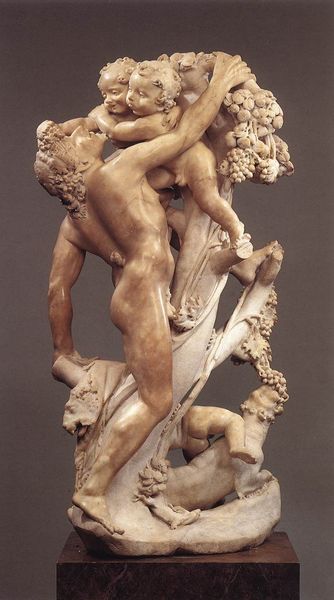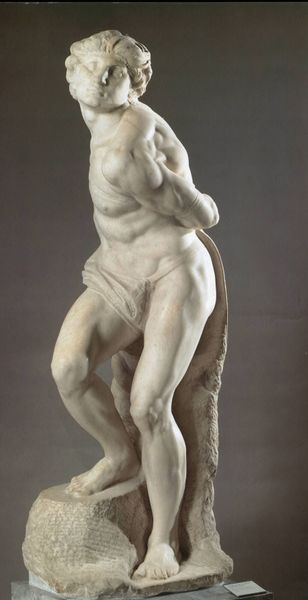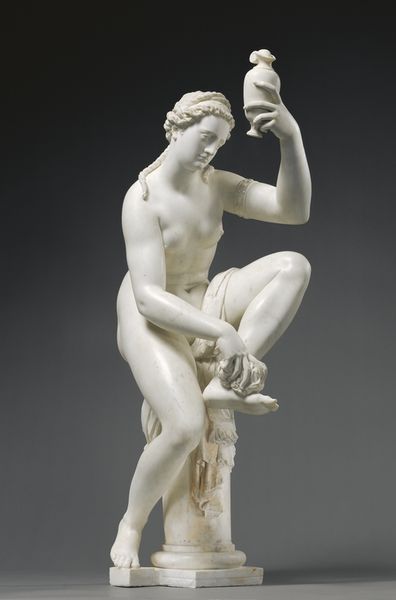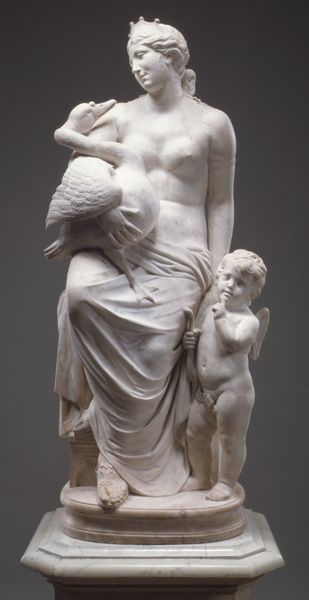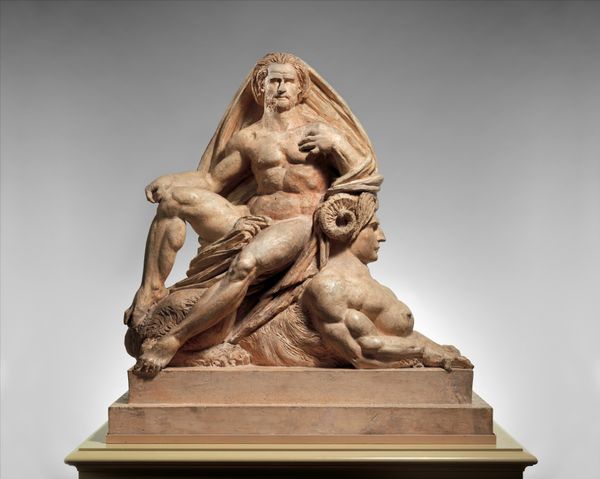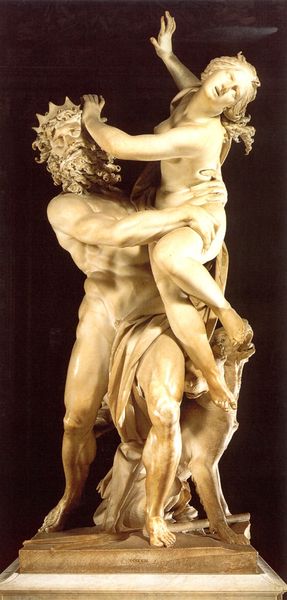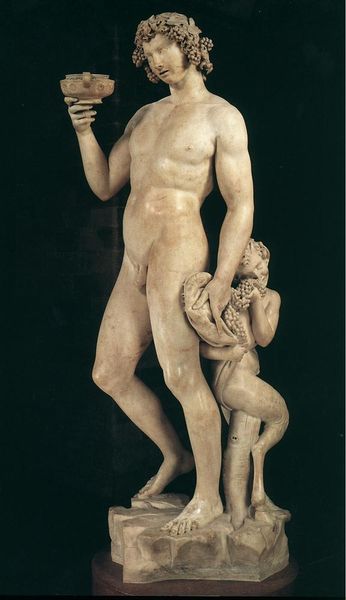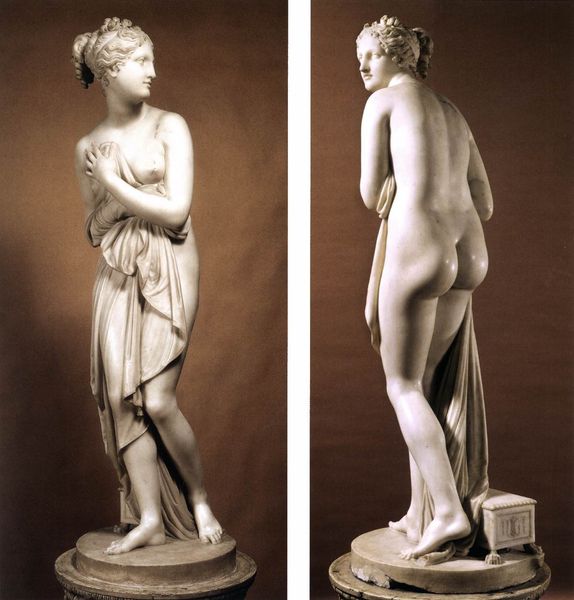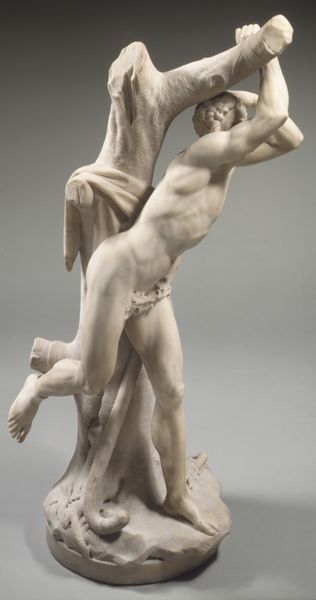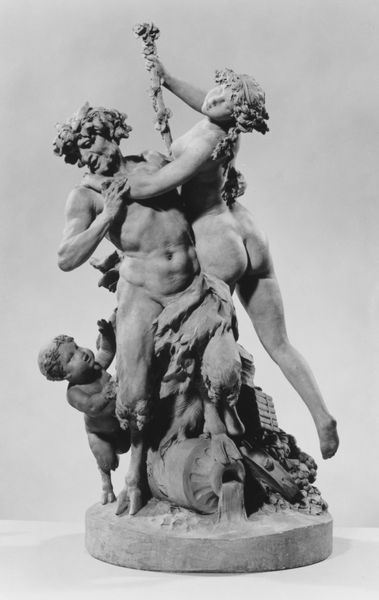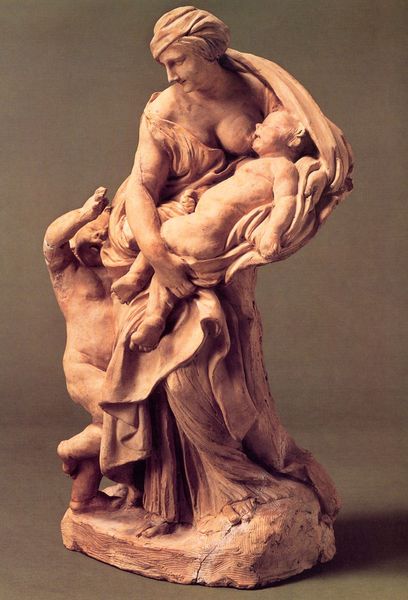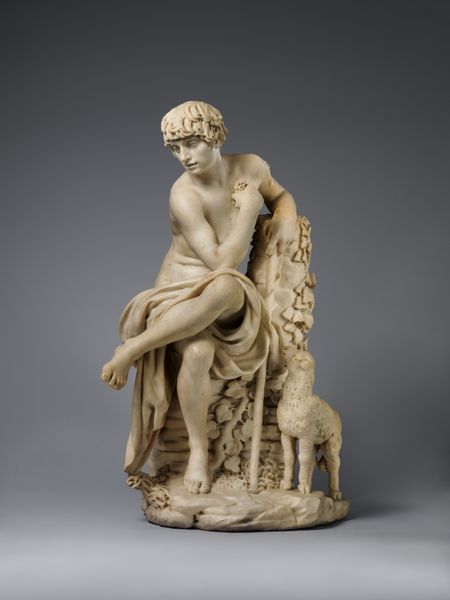
carving, sculpture, marble
#
allegories
#
statue
#
high-renaissance
#
carving
#
allegory
#
sculpture
#
figuration
#
11_renaissance
#
sculpting
#
sculpture
#
human
#
marble
#
italian-renaissance
#
male-nude
#
statue
Copyright: Public domain
Curator: What strikes me most immediately about Michelangelo's "The Genius of Victory" is the tension, a physical and emotional struggle rendered in marble. There's a sense of contained energy about to burst. Editor: Absolutely. And look how the spiral composition adds to that feeling. Victory towering, foot planted squarely on what looks like the shoulders of a defeated, aged figure. It’s a brutal ballet of power. Curator: Michelangelo began working on this piece around 1534, initially intending it for the tomb of Pope Julius II, though it never actually fulfilled that purpose, finding its current home here in the Palazzo Vecchio. Consider that he, even earlier, envisioned a massive tomb for the Pope and this was meant to stand with other similar figures. Editor: Do you think this specific sculpture became sort of an outlet for Michelangelo's own frustration with those unfulfilled ambitions and the Pope? It feels intensely personal. Is that old guy… Michelangelo himself perhaps? The subjugated form of a creative force he perhaps perceived within himself. Curator: It’s tempting to read biographical elements into it, yes. What interests me are the broader allegorical currents at play. “Victory” embodies the triumph of youthful vigour over age, a timeless theme explored throughout art history, in the very sinews, the weight of history on one's shoulders! He, “Victory,” stands proud while the vanquished figure beneath appears resigned to his fate. Editor: But see how unfinished that lower figure is? There’s a kind of ambiguity to the victory itself. It suggests the cyclical nature of triumph and defeat, as though one is perpetually bound to the other. And a deep, personal reading, for me anyway, always emerges viewing the figures as somehow being codependent: both defined by their interactions and in their physical relationship. Curator: A good point, because in the Renaissance the theme of Victory was tied to an idea of lasting fame. We see those visual emblems again and again; laurels, wings… but in this figure a very different, quieter pride. Editor: There’s an acceptance, certainly in the conquered figure. It’s interesting to observe them both as aspects of human endeavour: the ambition for lasting success and the understanding of our own human limitations and frailty. Maybe that's the actual genius: accepting the dance itself. Curator: Ultimately, this marble carving captures the complex, often uncomfortable dance between triumph and defeat, making it all the more relevant to our lives centuries later. Editor: A vital lesson for us all from one of art history's giants, isn’t it? Perhaps in our losses, too, is something to be celebrated.
Comments
No comments
Be the first to comment and join the conversation on the ultimate creative platform.
